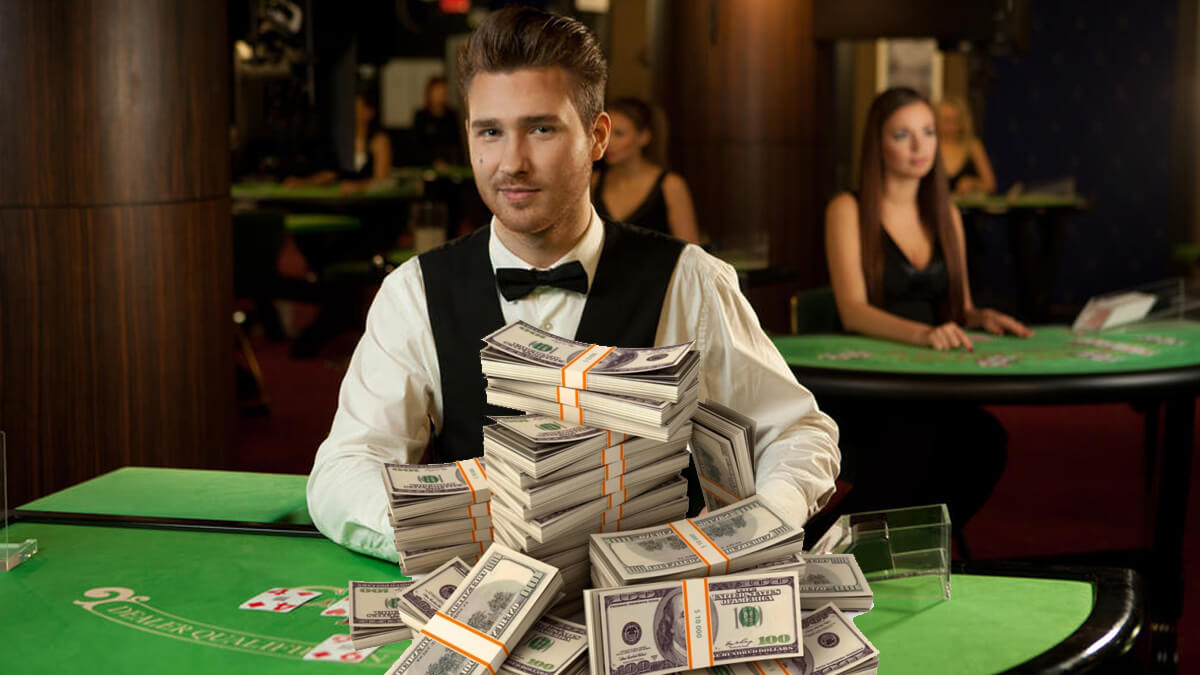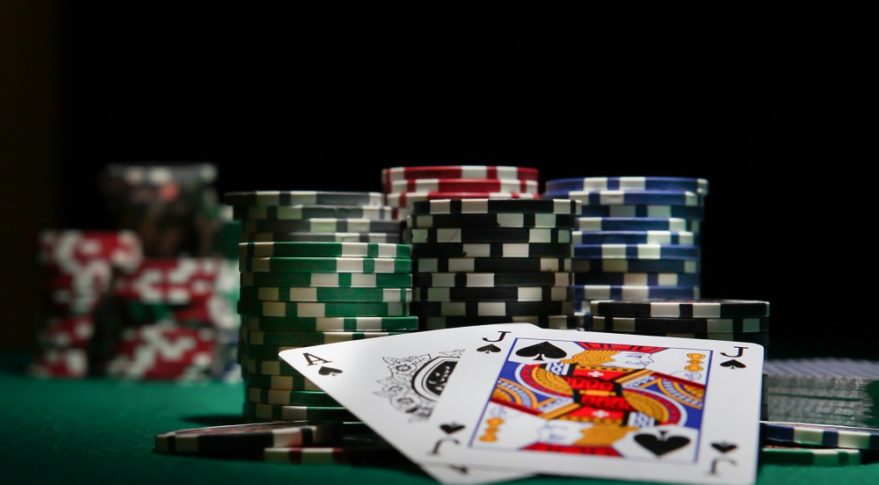Big Bet Blackjack
Blackjack side bets add a layer of complexity to the game, though at much greater risk. In this article we’ll take a look at the different side bet options, how they are structured and what side. Blackjack Betting and Returns. One of the things that makes blackjack such a popular game is that on every hand that you play, there are only one of four possible outcomes, we will explain these in more detail below. However there is one big problem with the Martingale system and that is the size of bets on a losing streak can quickly grow.
In a game like blackjack, where most of your payouts are even money or close to it, the only way to win big is to bet big. If you only bet $5 on a hand, the most you can realistically win is $7.50, and that’s only when you get a natural.
Contrast that with almost any other gambling game, even roulette. If you bet $5 on a single number bet at the roulette table, you can win 35 to 1 on your money. That means a $5 bet can result in a relatively big win of $175.
Let’s not even get into slot machines where the average jackpot pays off at 1000 for 1.
Knowing this, the question to ask yourself is:
When should you bet big in blackjack?
When You’re Using a Progressive Betting Strategy
I don’t generally recommend progressive betting systems like the Martingale, but they can be a fun way to gamble. They don’t improve your probability of winning in the long run, though. A negative expectation game is a negative expectation game regardless of how much you range your bets.
One way to bet big when playing blackjack is to double the size of your bet after a loss so that you can recoup your losses. This is commonly known as the Martingale system. It’s more commonly used by roulette players, but it can also be used by blackjack players.
It doesn’t seem like betting $10 after losing a $5 bet really qualifies as betting big, but the trick to understand with the Martingale is that you keep doubling your bets when you lose more than one or two times in a row.
When you’re doubling the size of your bet after every loss, you don’t need much of a losing streak before your bets get really large.
Look at what happens to the size of your bet after a five-hand losing streak:
- $5
- $10
- $20
- $40
- $80
$80 might not sound like a lot of money, but if you’re a $5 bettor, that’s a big chunk of change.
And keep in mind that by this point you’ve already lost $75. If you win that fifth bet, you’re still only ahead by $5.
When You Have a Lot of Your Bankroll Left at the End of a Gambling Trip
I always suggest to casino gamblers that they exercise appropriate bankroll management strategies. This basically just means having a specific budget for gambling on a casino trip. If you’re winning on a trip, you might have a big portion of your bankroll still intact. You might even have a bigger bankroll after two or three days than you had to begin with.
You have multiple ways to approach this situation. You could be conservative and take all your winnings and set them aside and just play with what amounted to your original bankroll.
Or you could be aggressive and decide to try to make your wins up to this point even bigger wins.
Here’s an example:
You’re a low roller. You go to Vegas for two nights with $400 to play blackjack with.
After your first night, you’ve gotten lucky, and you’ve doubled your money. You have $800 going into night 2.
If you’re a conservative player, you might set aside $600 and just play with the $200 you originally had budgeted for your second night. Even if you lose that $200, you’re going to go home a winner for the trip. That always feels nice.
But if you’re an aggressive player, you might decide to start betting twice as much per hand in an attempt to run up your winnings. You might even, if you’re feeling lucky, place one really big bet of $500 toward the end of your playing session on the second night.
These are both appropriate ways to approach betting big in blackjack.
The main thing to remember is that even though the house edge in blackjack is low, the house DOES still have an edge. If you play any game with a house edge long enough, you’ll eventually lose all your money.
When You’re Counting Cards and the Count Is Positive
Most of you are probably familiar with the concept of counting cards in blackjack already.
But just in case, here’s the mathematically best situation in which you can bet big in blackjack:
As we discussed earlier, when you get a natural in blackjack, you get a 3 to 2 payout. Bet $10 and get a blackjack, and you’ll win $15.
The only way to get a blackjack is to get a card worth 10 points and another card worth 11 points. (The aces are the only cards worth 11 points, while the 10s, jacks, queens, and kings are all worth 10 points each.)
Since decks are randomized (shuffled), their composition changes from game to game. In some games, the high cards—the aces and 10s—fall into clumps. So do the small cards. That’s just the nature of a random shuffle. Rarely do the cards get evenly distributed.
So, if a deck of cards has a proportionally higher number of aces and 10s in it than usual, the house edge disappears. In fact, the edge goes to the player.
This is because the probability of getting a blackjack, and the correspondingly higher payout, goes up with the changing composition of the deck.
The reverse is true, too. A deck that’s relatively rich in low cards increases the house edge.
You should, therefore, bet more when the deck is rich in high cards and bet less when the deck is rich in low cards.
But how do you know?
How Do You Know When to Increase the Size of Your Blackjack Bets?
The easiest way to count cards is to give high cards a negative value and low cards a positive value. As you see these cards come out of the deck, you change your ongoing count to reflect the ratio of high to low cards in the deck.
The easiest system to start with is probably the Hi Lo system. This methodology counts low cards as +1. The low cards to count are 2, 3, 4, 5, and 6.
The high cards count as -1 each. These cards are the aces and all the cards worth 10 – 10, jack, queen, and king.
When the dealer shuffles the deck, you start over again at 0.
When the count is positive, bet more.
When the count is 0 or negative, bet less.

How Much Should You Bet?
The Kelly Criterion suggests that you should bet more when your edge is higher. This will minimize your probability of going broke while optimally helping you win more often.
In practical terms, here’s how you know how much to bet:
You start by deciding what level of game you’re comfortable with. You might feel comfortable playing for $10 per hand.
Your next step is to decide what your betting range is. You might decide to have a betting range of 1 to 4 units, which means you’ll bet between $10 and $40 on each hand.
The bigger your betting range is, the more aggressive you are.
That’s a double-edged sword, though. With a more aggressive betting range, you stand to win more money in the long run.
But you’re also more likely to attract negative attention from the casino’s staff.
You add the number of the count to your base bet to get the number of units you want to bet.

For example, if you have a count of +2, you’d bet $30.
You’re always betting $10 per hand anyway, and that $10 represents a single betting until.
Since the count is +2, you’d add 2 betting units—or $20—to the size of your bet.
Adjusting for the Number of Decks
Having more decks in play dilutes the effectiveness of your count. That might seem counterintuitive at first, but let’s think about it for a minute.
Suppose you have a single deck blackjack game where four aces have already been dealt. The probability of getting a natural at that point drops to 0%. You can’t have a blackjack without an ace, and if all the aces are gone, you’re done.
But if you’re playing in a game with two decks and four aces have been dealt, you still have four aces left in the deck. The probability of getting a blackjack drops, but it doesn’t drop to 0.
Converting your “running count” to a “true count” is the solution. The running count is just the count you’ve kept up with while playing. The true count is that count adjusted for the number of decks you’re playing against.
Darpa’s Big Bet On Blackjack
To convert a running count to a true count, you estimate how many decks are left. You divide the running count by the number of decks left in the shoe to get the true count.
You size your bets based on the true count, NOT the running count.
Conclusion
When should you bet big when playing real money blackjack?
The truth is, you should bet big in blackjack anytime you want to.
Different players have different strategies for this.
Big Bet Blackjack Game
The only time you SHOULDN’T bet big in blackjack is when you’re playing with money you can’t afford to lose.
Let’s hope you just never do that as a matter of course.